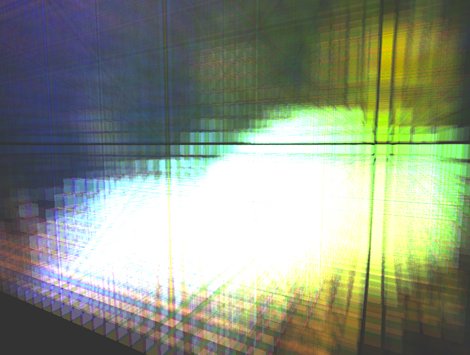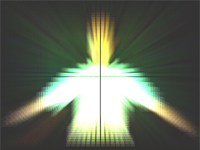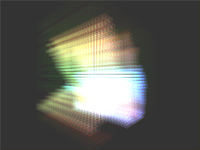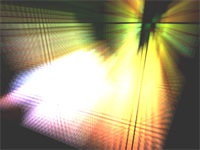FOR OUR SECOND EXPERIMENTAL MEDIA PROJECT
We were asked to form a design team for a 2D Platform video game. The team composed of two students from a computer science class and two students from Professor Friebele's experimental media class. The process began with the computer science students forming proposal for their project. The proposals entailed a basic narrative, a style of game play defined by individual group skills and abilities, and a rough list of assets that they needed. The students presented the proposals to our class and we were asked to choose the games that we were interested in, based on our own preferences and skills in graphic arts. For most of the students, this was a brand new realm of digital media and my experience was made even more unknown: I was not in class when proposals were presented. I initally was disappointed in that, but as the project progressed I felt that the unknown is what made the execise worth while.Our group was assigned SezQuest, a 2D sword fighting game where the main character, Sez wakes up in a land far from home. He is forced to battle enemies through four different levels on his journey home. In the end, he wakes up at home and realizes that it was all a dream.

Once the professor assigned groups, I met with my design partner to brainstorm and discuss possiblities. We browsed the web and found aspects of game design that were most fascinating to us, collecting a body of source material that would explore the creative possibilities for the project. We found a ton of ideas involving more complex gaming platforms which challenged us to tackle the same creative issues on a smaller scale. Our ideas ranged from narrative choices to pixel/ quality choices concerning style and aspects of gameplay. Within the game convention, it is surprisingly difficult to add creative elements without changing how the game would be received.
Initially, we had very little constraint and ideas exloded in many directions. We understood that these abstract ideas may get shot down eventually, but in terms of working with a multidimensional group, it was our responsibility to push these ideas and contiunue to make them evolve. This responsiblity came from the fact that our game design students might be less aesthically sensitive and would be satisfied with function. As artists working within a new group, we had push ourselve to remain creative and enthusiastic throughout the project.
Working in group with many varied ideas was a major excercise of this assignment, forcing us to find ways of translating ideas and communicating between two separate worlds. Sharing information with others who may not use the same words to decsribe their ideas posed as a huge obstacle but also stengthened our collaboration skills. The excercise was simliar to how a team might work together in a professional setting, where you are cast into the unknown and the project may not be entirely what you had expected. All things aside, you must be assertive and self driven if you want to be successful.
Working in group with many varied ideas was a major excercise of this assignment, forcing us to find ways of translating ideas and communicating between two separate worlds. Sharing information with others who may not use the same words to decsribe their ideas posed as a huge obstacle but also stengthened our collaboration skills. The excercise was simliar to how a team might work together in a professional setting, where you are cast into the unknown and the project may not be entirely what you had expected. All things aside, you must be assertive and self driven if you want to be successful.
Once my partner and I got a sense of how the project was going to play out, we felt that we should make the assignment more concrete. We thought about the body of art assets that we were to make and divided them between environments and characters, the two largest elements. We focused individually on our assets, meeting with the computer science students mostly separately to discuss the game's progress, depending on the many complications of scheduling. In a way this fostered spontanaeity and experimentation. However, our game may have become more resolved if we had arrange more face-to-face time.
The most important aspect that pushed ideas forward was source material. By collecting source material, we were able to sample many different styles of game design, each with their own strengths and weaknesses. This collection of images formed a bridge between our team and the program team, creating a visual language for feedback, where the program students could manifest their likes and dislikes without much prior common knowledge of the style choices. We collected a vast range of images from more realistic, to entirely conceptual and discussed what ideas would be most succesfully communicated.
As the game came together, it was meaningful and worthwhile to see the programers slowly become more enthusiastic about the project, as their ideas came to life in clean visual form. I felt a great feeling of independence and maturiy having been viewed as professsional and master of my craft. The programmers respected my opinion and were excited to listen to my ideas. It was also meaningful to see how my abstract ideas could evolve into a product which was far larger than anything I could have created alone. In addition, I got to see my own work evolve in ways that I would never have considered myself.
After many formating issues (and some late exchanges between team members about tweaks and alterations), we had completed the full range of motions for characters and large level backgrounds which could be manipulated by the programmers as they desired. Despite initial anxiety, our project came together nicely and I was, to an extent, satisfied with the final product.
As you can see in my last post, research is key to making a creative and successful video game. Unfortunately, I did not get to do as much research during the process as I would have liked. There were some tentative deadlines to meet and some constraints of game design which prevented more complex and creative elements from emerging.
It is my beleif that I was least successful in this aspect of the process. Having already completed my video game design and looking back, I would have liked to make my game more representative of the concepts discussed in my last post. In most senses, my game conforms to an existing convention, with a linear, goal-oriented narrative that the player commits himself or herself to. I found often that when doing research, I was looking for games that I knew of, rather than looking for new experimental ideas.
After doing further research I would have liked to suggest more manipulation of the platform to break the typical style of gameplay. I would have liked to break the concepts down further and related my game artists who have established themselves in the world of game design. I also would have liked to contextualize the game to say something about culture. In a sense, video games are a product of our culture and it is important to me that we are conscious consumers of this form of media.
Although this was primarily because of my novice game design skills, it was also due to my lack of knowledge about video game history. In any case, it is apparent how important research is to manifesting your ideas in a work of art, even when many obstacles may stand in your way.
















